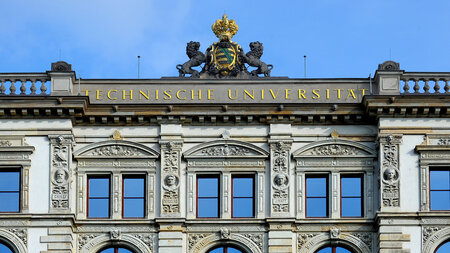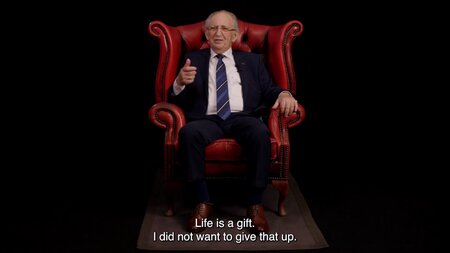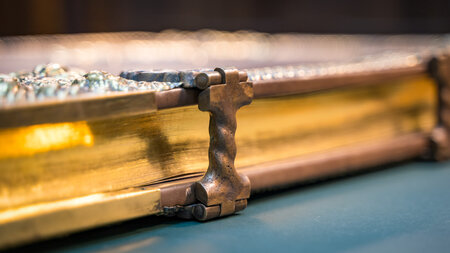Not current page! |
Teilprojekte
A1 – Manufacturing Technologies for Integratable Piezoelectric Fibers and Laminates
This subproject focuses on the subject of piezoelectric fibers and laminates for the production of adaptive structure components that are suitable for serial production. The piezo fibers are planned to be integrated into thermoplastic composite structures and into microstructured light metal plates (SP A5, A2). This requires fibers of different geometries with optimized sensor and actuatory features that are mountable with hardly being damaged. The piezo modules are to be produced from composites of piezoceramic layers or piezoceramic plates and further inorganic materials so that they have no defects and functional limitations after the manufacturing step of pressure casting (SP B3).A2 – Microstructuring and Integration Technology for Piezo Fibers in Metallic Carrier Materials (Sheet Metal)
It is the object of the research to find and test prototype-compatible mechanisms to develop a technology for the production of piezo fiber-metal-modules with aluminum as carrier material. The actions aim a forming technical manufacturing of microcavities in aluminum-sheet metal as well as an integration of piezo fibers into these microstructures. After having provided the prototypes, piezo fibers are to be positioned into the cavities in relation to the microstructure and inserted into the cavities to be joined there durably. Various methods and active principles for the later planned high-volume-compatible production of these modules are to be explored and evaluated.A3 – Production and Optimization of the Insulation Layer
This project targets on the production and optimization of an electrical and a mechanical highly resilient insulation layer on microstructured light metal carriers (sheet metal). This is done by means of plasma-based chemical vapour deposition. The functional and mechanical layer characteristics of the insulator layer are measured and serve as basis for optimizing the deposition process as well as important input values for modeling and dimensioning the sensor-/actuator system.A4 – Laser-Based Electrical-Mechanical Contacting for Composite Components with Integrated Active Elements
The reliable mechanical and electrical contacting of piezo-based actuator elements challenges the modern microjoining technique in the production of composite materials. Within the project, concepts on the optimal contacting of several process chains for the production of functional materials are developed. For this reason, the highly flexible joining techniques laser soldering, laser microbrazing and laser droplet welding are used.It is experimentally and simulation technically examined and fundamentally evaluated, whether these procedures for a reliable contacting of the actuator elements are adaptable and profitable respectively.
A5 – Development of Thermoplastic Composite-Compatible Piezoceramic Modules (TPM) and Corresponding Production Methods
This subproject premeditates to develop innovative thermoplastic composite-compatible piezoceramic modules (TPM) whose thermoplastic backing film is firmly bonded with the fibered thermoplast carrier structure in the later module integration. Therefore, corresponding close-to-production TPM production methods need to be worked out. By selectively melting down the thermoplastic backing film of the TPM and of the thermoplastic matrix component of the carrier structure, the desired homogeneous embedding of TPM in carrier structures can be guaranteed during the subsequent processing of the TPM with a direct technique that has to be developed in SP B4. So, the conventional additional adhesive assembly steps and possible local fault zones can be omitted.B1 – Forming of Piezo-Metal Composites
The research targets an integration of piezoceramics into sheet metal structures in such a way that in spite of the low formability of the ceramics, the functionality of the piezo sensors and actuators is maintained in a moderate forming process. For that reason, methods for the integration need to be investigated, e.g. adhesive bonding, soldering and mechanical joining. The embedding has to be made so reasonable that a later forming of the piezo-metal composite can be realized to a certain extent. So, e.g. strategies on applying the adhesive, the hardening, the embedding of the piezo module into the adhesive and so on are to be developed. Parallel studies on the loading of these composites are always required and also show the limits of the possible forming.B2 – Simulating the Forming of Piezo-Metal Composites
In the first application term, the research task deals with the numeric simulation of forming the piezo-metal composites by means of the finite elements method.In this case, a piezo module (purchased part) is surrounded by two sheet metal plates. During the forming of this composite, a combined bending torsional and stretching load occurs. As the piezo fibers are marked by a brittle material behavior, the deformations of the piezo module produced from the forming process are intended to be limited. Through a “floating” bearing of the piezo module in between the sheet metal plates that is present when using a relatively thin fluid adhesive for compounding module and sheet metal, a stretching load can be avoided as far as possible. The hardening of the adhesive to ensure the functional task of the composite is only effected after the forming.
Knowledge about the “global” mechanical behavior of the piezo module as well as about the rheological characteristics of the used adhesives is an important precondition for the numeric simulation to form the composite. The object of the following FEM-simulation is to numerically calculate the deformations of the piezo module resulting from the forming of the composite so that statements on its functionality after the forming process can be made.
B3 – Casting Technical Integration of Piezoceramic Modules into Metal Components
This subproject purposes an integration of piezoceramic sensor-actuator modules into metal components within a pressure casting process.Here, the significant challenge is controlling the thermomechanical stressing of the modules in the course of mold filling and cooling. This project sees the solution for a damageless integration in jacketing the modules that need to be molded with a wire-fabric structure which can easily be penetrated by the melt. Thereby, the homogeneous supporting effect of the fabric structure is to minimize the local force acting upon the module. By means of FE simulators process strategies are to be developed that optimize the pressure resulting from the cooling in terms of failing and functionality.




